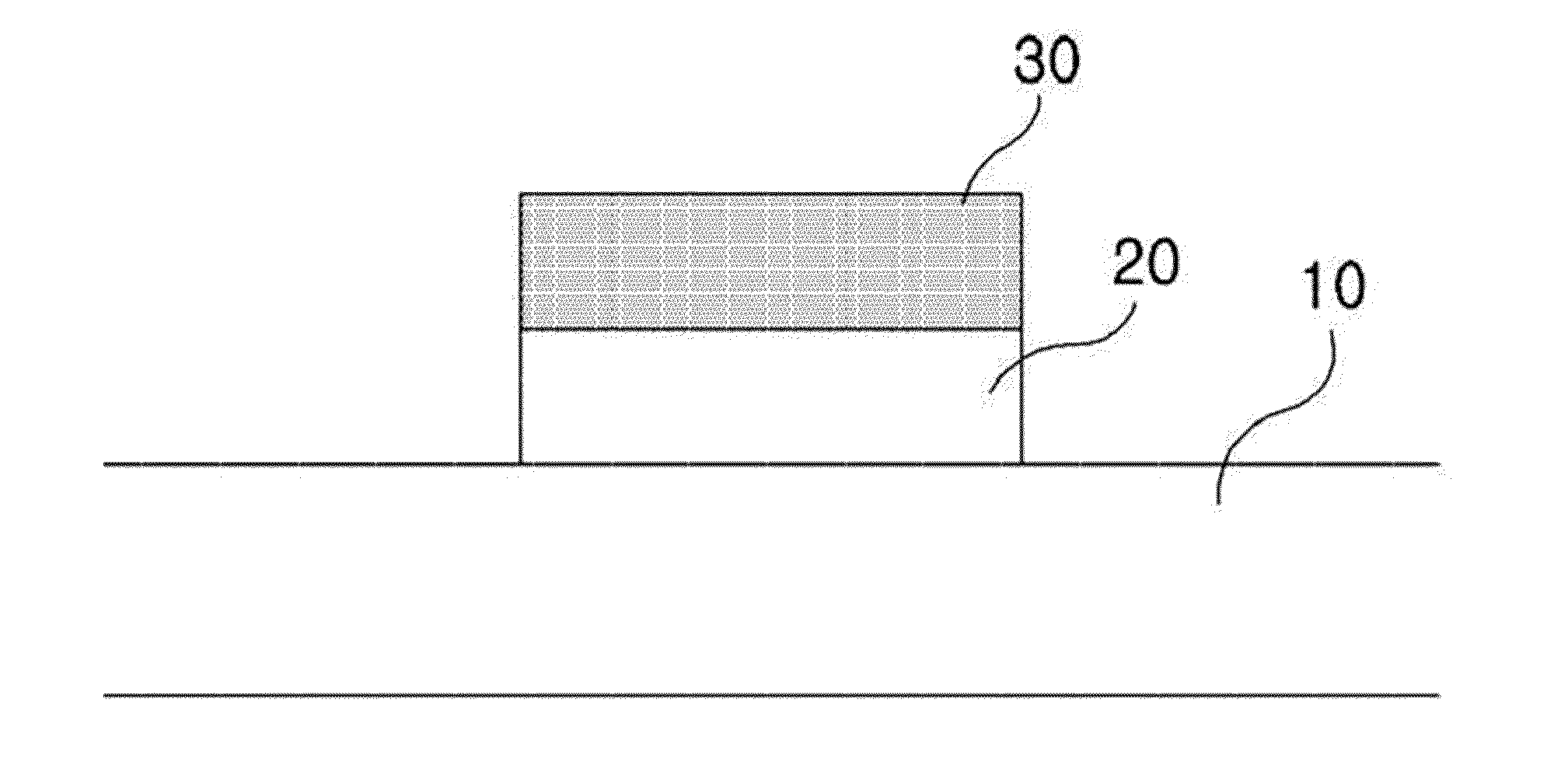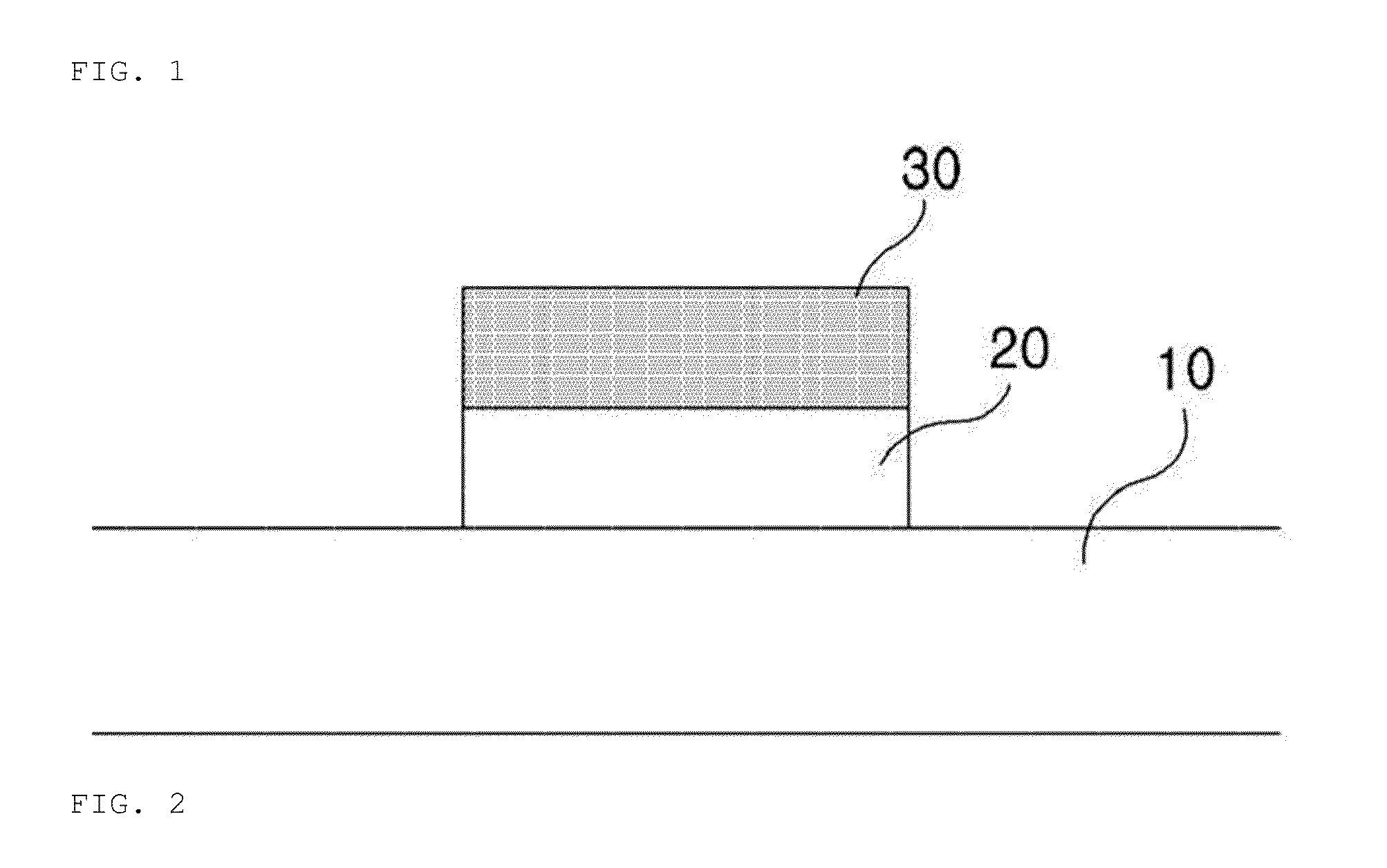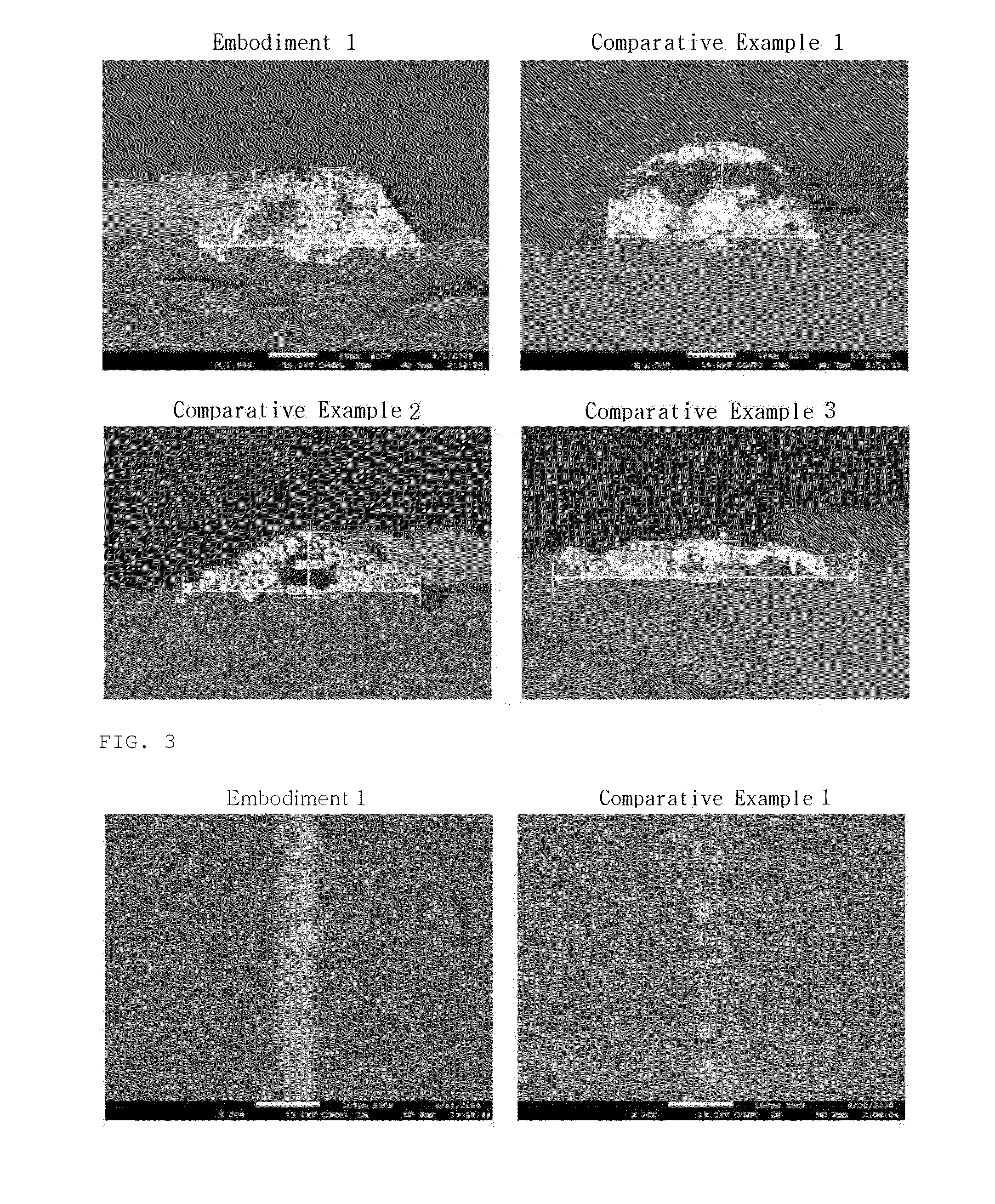Electrode for a solar cell, manufacturing method thereof, and solar cell
- Summary
- Abstract
- Description
- Claims
- Application Information
AI Technical Summary
Benefits of technology
Problems solved by technology
Method used
Image
Examples
Embodiment Construction
Example 2Example 3Binder15 (Tg 87° C.)15 (Tg 26° C.)15 (Tg −19° C.)Diluting2.02.02.0solventSlip1.01.01.0Agent ( )Dispersing1.01.01.0AgentSilver787878PowderGlass333PowderTotal 100100 100
[0070]Also, printing methods in Embodiment 1, and Comparative Examples 1 to 3 are shown in following Table 2, and an aspect ratio, a line width, a height, and a cell efficiency of the electrode are shown Table 3, and FIGS. 2 and 3.
TABLE 2ComparativeComparativeComparativeEmbodiment 1Example 1Example 2Example3A number of printing3333First layer materialManufacturingManufacturingManufacturingManufacturingExample 3Example 1Example 2Example 3Second layer ManufacturingManufacturingManufacturingManufacturingmaterialExample 1Example 1Example 2Example 3Third layer materialManufacturingManufacturingManufacturingManufacturing Example 1Example 1Example 2Example 3
TABLE 3Aspect ratioLine widthEfficiency(height / width)height [μm][μm](%)Embodiment 10.42819.345.118.9%Comparative0.49621.242.7 8.9%Example 1Comparative0.2...
PUM
| Property | Measurement | Unit |
|---|---|---|
| Temperature | aaaaa | aaaaa |
| Temperature | aaaaa | aaaaa |
| Length | aaaaa | aaaaa |
Abstract
Description
Claims
Application Information
 Login to View More
Login to View More - R&D
- Intellectual Property
- Life Sciences
- Materials
- Tech Scout
- Unparalleled Data Quality
- Higher Quality Content
- 60% Fewer Hallucinations
Browse by: Latest US Patents, China's latest patents, Technical Efficacy Thesaurus, Application Domain, Technology Topic, Popular Technical Reports.
© 2025 PatSnap. All rights reserved.Legal|Privacy policy|Modern Slavery Act Transparency Statement|Sitemap|About US| Contact US: help@patsnap.com



